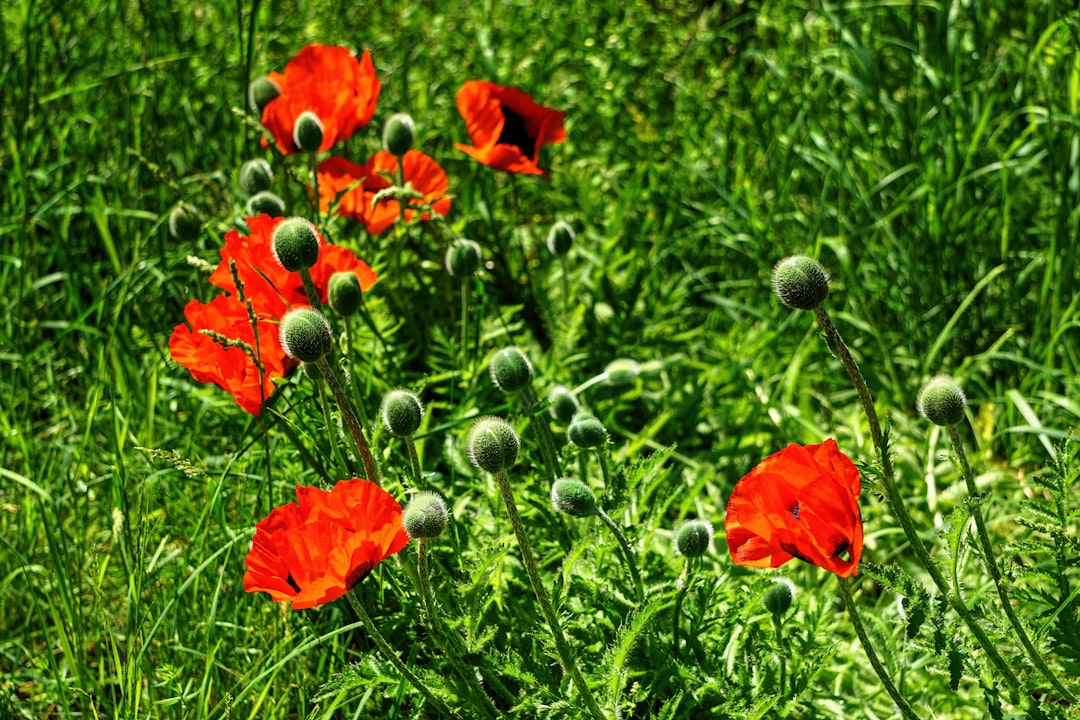Elevate Your Gardening Game with Vertical Magic

In the world of gardening, space is often a precious commodity. But fear not, as vertical gardening offers a brilliant solution to add dimension and maximize your growing spaces. Whether you're an aspiring herb gardener, looking to adorn a trellis, or aiming to infuse color while saving space, vertical gardening is the way to go.
One of the most appealing aspects of vertical gardening is its versatility. It can be adapted to suit various gardening goals and styles. For those with a penchant for fresh herbs, creating a vertical herb garden is a practical and aesthetically pleasing choice. You can use a variety of containers, such as hanging baskets, wall-mounted planters, or even repurposed items like old gutters. These containers can be filled with a well-draining potting mix and planted with your favorite herbs like basil, parsley, thyme, and mint.
Not only does a vertical herb garden provide easy access to fresh ingredients for your culinary adventures, but it also adds a delightful aroma to your outdoor or indoor space. Imagine stepping out onto your balcony or into your kitchen and being greeted by the fragrant scent of freshly picked herbs. It's a sensory experience that enhances the overall enjoyment of gardening.
If you're more interested in adding a touch of elegance to your garden, dressing a trellis with climbing plants is a fantastic option. Trellises provide a structure for plants to grow vertically, creating a beautiful living wall. You can choose from a wide range of climbing plants, including roses, clematis, ivy, and jasmine. These plants not only add a splash of color but also attract pollinators like bees and butterflies, contributing to a healthy and vibrant ecosystem.
When selecting climbing plants for your trellis, consider their growth habits and requirements. Some plants prefer full sun, while others thrive in partial shade. Make sure to choose plants that are suitable for your climate and the amount of sunlight your trellis receives. Additionally, provide proper support for the plants as they grow, such as tying them to the trellis or using plant clips.
Another advantage of vertical gardening is its ability to save space. In urban areas or small yards, where ground space is limited, vertical gardening allows you to make the most of your available area. You can transform a bare wall or fence into a lush garden by installing wall-mounted planters or using a vertical gardening system. These systems typically consist of multiple tiers or shelves, allowing you to grow a variety of plants in a compact space.
Container gardens are a popular choice for vertical gardening, as they offer flexibility and mobility. You can easily move your containers around to find the best sunlight or to protect your plants from harsh weather conditions. When choosing containers for your vertical garden, opt for ones that are lightweight, durable, and have good drainage. You can also mix and match different container sizes and styles to create a visually interesting display.
In addition to the practical benefits, vertical gardening can also be a creative and rewarding hobby. It allows you to express your personal style and creativity by choosing different plants, colors, and arrangements. You can experiment with different combinations of plants to create a unique and eye-catching garden that reflects your personality.
To get started with vertical gardening, you'll need a few basic tools and materials. These include a trowel, pruning shears, a watering can or hose, potting mix, and plants. You may also want to invest in a vertical gardening system or wall-mounted planters, depending on your specific needs and preferences.
Before planting, prepare your containers or vertical gardening system by filling them with potting mix. Make sure to leave enough space for the roots of the plants to grow. When planting, gently remove the plants from their nursery containers and loosen the roots. Place the plants in the containers or on the vertical gardening system, and fill in the remaining space with potting mix. Water the plants thoroughly to help them settle in.
Once your vertical garden is established, it's important to maintain it properly. This includes watering the plants regularly, fertilizing them as needed, and pruning them to keep them in shape. You may also need to monitor for pests and diseases and take appropriate measures to control them.
In conclusion, vertical gardening is a wonderful way to add dimension, beauty, and functionality to your growing spaces. Whether you're a seasoned gardener or a beginner, there are endless possibilities to explore with vertical gardening. So, roll up your sleeves, get creative, and start transforming your garden into a vertical oasis today!